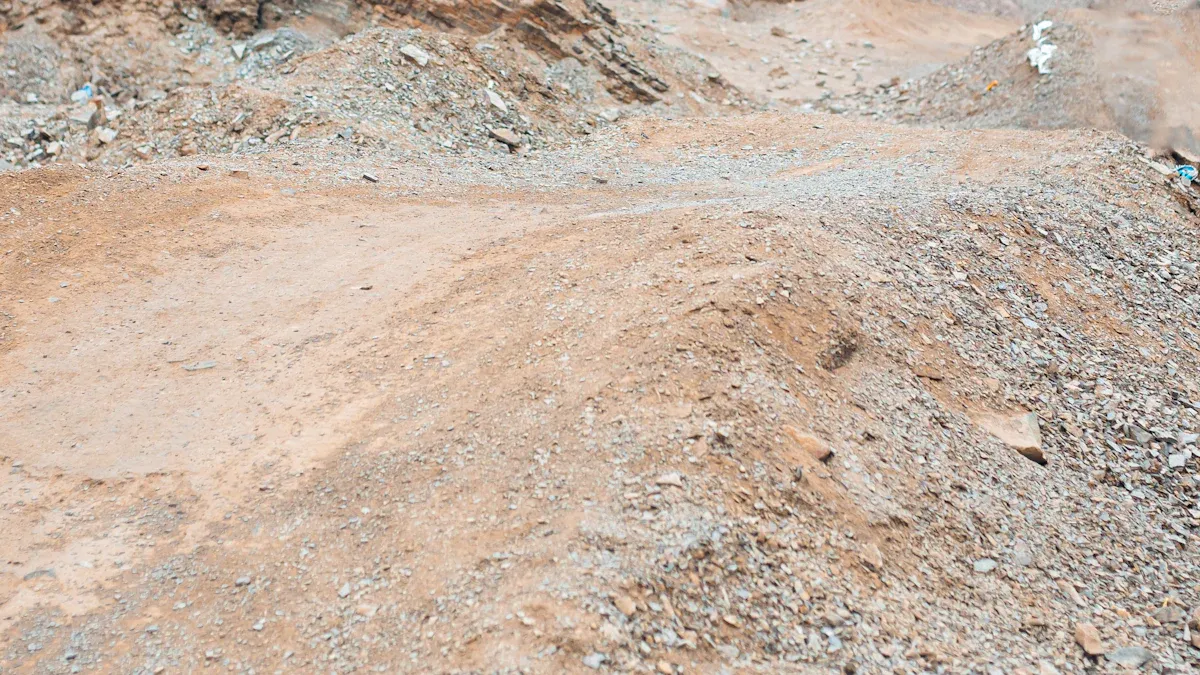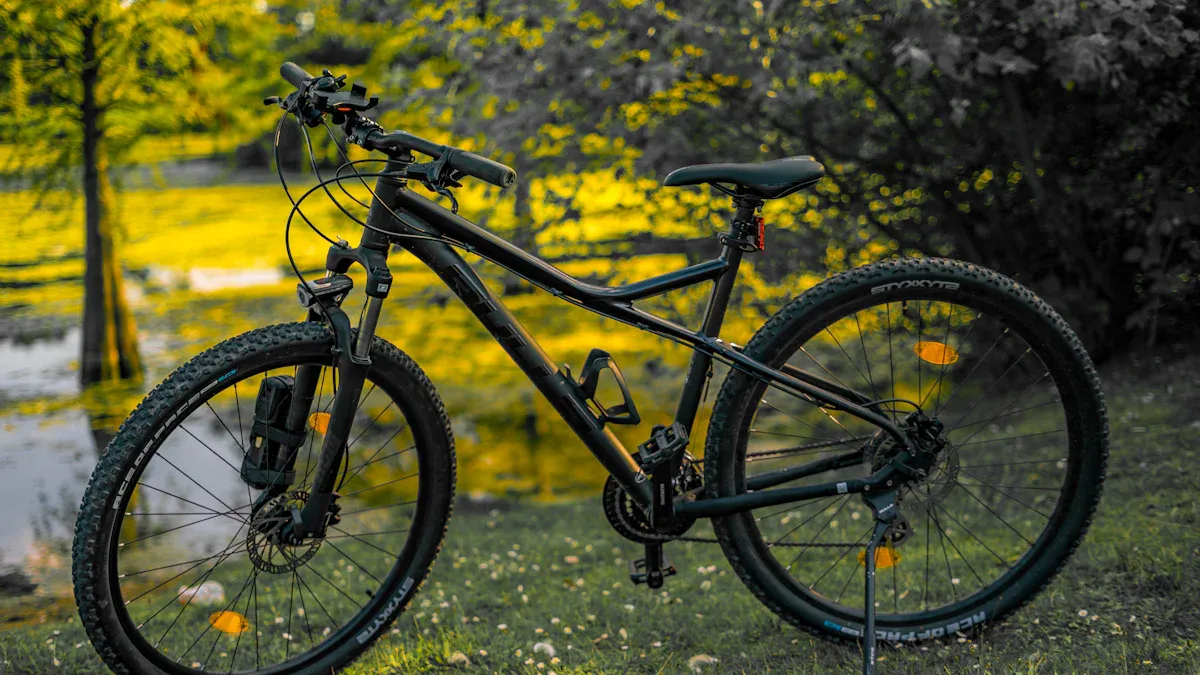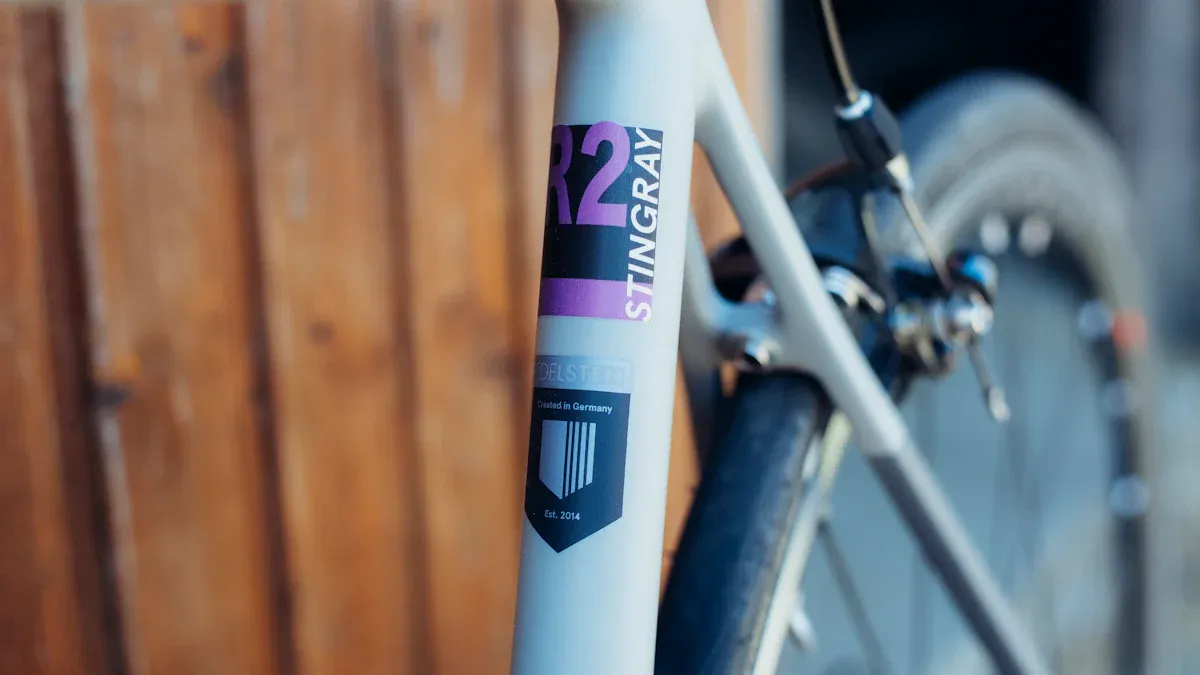
Mountain bike frame geometry is very important for how your bike works on different surfaces. It influences how well you climb, how fast you go down hills, and how you control the bike. By learning the numbers in a mountain bike frame chart, you can pick a bike that fits your riding style. Whether you are just starting or have lots of experience, knowing these facts helps you make smart choices for a better ride.
Key Takeaways
Knowing mountain bike geometry helps you pick a bike that matches your riding style. This knowledge makes your ride more enjoyable.
A steeper seat tube angle helps you climb better. It puts your hips over the bottom bracket. This makes climbing easier and less tiring.
The head tube angle changes how you steer. A steeper angle lets you turn faster. A slacker angle gives you better stability on bumpy trails.
Wheelbase length affects how stable and easy your bike is to handle. A longer wheelbase gives more stability. A shorter one helps you turn quickly in tight spots.
Getting the right bike fit is very important for comfort. Change the saddle height, handlebar position, and frame geometry to feel less tired and enjoy your ride more.
Understanding Mountain Bike Geometry

Mountain bike geometry means the specific sizes and angles that make up a bike’s frame. These sizes are very important for how the bike works on different surfaces. Knowing these details helps you find a bike that fits your riding style and what you like.
Significance of Mountain Bike Geometry
The geometry of a mountain bike affects several key areas:
Climbing: A steeper seat tube angle, like 75°, puts your hips right over the bottom bracket. This helps you climb better and use less energy. On the other hand, a slacker angle, such as 72°, moves your weight back. This makes climbing harder.
Descending: When going down hills, the bike’s geometry affects how stable and in control you feel. A slacker head tube angle gives you better stability at high speeds. This helps you ride over rough ground with more confidence.
Handling: How the bike handles depends on different geometry factors. For example, the head tube angle changes how quickly you can steer. A steeper angle lets you turn faster, while a slacker angle makes it more stable but slower to handle.
To show these points, look at the table below. It summarizes how different geometry factors affect handling:
Geometry Factor | Effect on Handling |
|---|---|
Headtube Angle | Changes how you steer; different angles change how hard you need to pull on the handlebars. |
Fork Offset | Makes the wheelbase longer and decreases trail, which leads to quicker steering. |
Bottom Bracket Height | A higher height raises the center of gravity, which affects how well you can corner; lower is better for stability. |
Wheelbase | Longer wheelbases make the bike more stable; shorter ones help with quick turns. |
Knowing these sizes helps you make smart choices when picking a bike. For example, a longer wheelbase makes the bike stable, while a shorter one helps it turn quickly.
Key Elements of Mountain Bike Geometry

Head Tube Angle
The head tube angle is very important for how your bike steers. This angle affects how quickly and steadily your bike responds. For example, a steeper head tube angle is usually found in cross-country bikes. It ranges from 70 to 71.5 degrees. This design helps you turn faster, making it easier to go around tight corners. On the other hand, downhill bikes have a slacker head tube angle. This angle can be as low as 64 degrees. It gives you better stability at high speeds, especially on rough ground.
Bike Type | Head Tube Angle Range |
|---|---|
XC (Cross Country) | 70 to 71.5 degrees |
Trail/AM | Intermediate values |
DH (Downhill) | As slack as 64 degrees |
Wheelbase
The wheelbase is another important measurement that affects your bike’s performance. A longer wheelbase makes your bike more stable, especially when going fast or on tough trails. This stability helps you avoid oversteering, which is key for keeping control while riding. In contrast, a shorter wheelbase makes your bike more agile. This helps you move easily through tight spots. Riders who like quick handling often choose bikes with shorter wheelbases.
Top Tube Length
The top tube length impacts how you sit and your comfort. A longer reach helps you keep a more aggressive position. This is good for climbing and going downhill. But if the reach is too long, it can cause discomfort on long rides. A shorter top tube length gives you a more upright position. This is great for casual rides but may not help much on tricky trails.
Knowing these key parts of geometry helps you pick a bike that fits your riding style. Whether you want speed, stability, or comfort, the right geometry can really improve your time on the trails.
Frame Geometry and Riding Experience
Handling and Stability
Frame geometry is very important for how your bike handles and stays stable. A steeper head tube angle, about 73°, helps you steer quickly. This is good for racing but can make the bike less stable on bumpy trails. On the other hand, a slacker head tube angle, around 65°, makes the bike more stable at high speeds and on rough ground. This stability is key when riding on tricky trails because it helps you keep control of your bike.
Also, the length of the wheelbase affects your ride a lot. A longer wheelbase gives you a more stable ride, especially when climbing or going down hills. This stability can help you avoid falls and injuries, which is very important for mountain biking. But a shorter wheelbase lets you turn faster, which is helpful in tight spaces.
Climbing and Descending
For climbing, the seat tube angle is very important. A steeper seat tube angle puts your hips right over the bottom bracket. This helps you climb better and use your energy efficiently. However, if the angle is too steep, it might make you uncomfortable on long rides.
Descending is where frame geometry really helps. A slacker head tube angle gives you better control and stability when going fast. This stability helps you ride over rough terrain with confidence. When you have a longer wheelbase and a slacker head tube angle, it makes going down hills feel smoother and more controlled.
Comfort and Fit
Comfort is very important for a good ride. Having the right bike fit is key to being comfortable. The geometry of your bike, like the head tube angle, seat tube angle, and top tube length, affects how well the bike fits you. A bike that fits well can lower the chance of injuries and make your ride better.
Research shows that fitting the bike to your body size is important. One study called “Applying riding-posture optimization on bicycle frame design” says that a good bike fit helps comfort and performance. Another study, “Long-Term Effects of a Kinematic Bikefitting Method on Pain, Comfort, and Fatigue,” shows how making ergonomic changes can lower injuries and improve comfort for cyclists.
Here’s a summary of key findings from these studies:
Study Title | Key Findings | Methodology |
|---|---|---|
Applying riding-posture optimization on bicycle frame design | Stresses the need to fit the bike frame to your body size for better comfort and performance. | Used image processing to check riding posture and find key points for frame design. |
Long-Term Effects of a Kinematic Bikefitting Method on Pain, Comfort, and Fatigue | Shows how ergonomic changes can lower injuries and boost comfort for cyclists. | Looked at the movement and forces on knees and other body parts to study injuries. |
To be more comfortable, think about these things:
Proper saddle and handlebar height.
Tire size and air pressure.
Saddle design and padding.
Frame geometry, which affects handling and comfort.
Handlebar parts, like brake lever hoods and tape design.
By knowing how frame geometry affects handling, stability, climbing, descending, and comfort, you can make smart choices about your bike fit. This knowledge will improve your riding experience and performance on the trails.
Understanding mountain bike frame geometry is very important for improving your riding skills and fun. When you learn how geometry affects handling, climbing, and going downhill, you can make smart choices.
Different frame shapes are made for different riding styles. For example, cross-country riders like light carbon frames for better speed.
New bikes with better geometries are more popular. They give you better handling and stability, which can also help when selling the bike later.
By thinking about these things, you can pick a bike that suits your needs and makes your ride better. Enjoy your ride! 🚴♂️
FAQ
What is mountain bike frame geometry?
Mountain bike frame geometry means the specific sizes and angles of a bike’s frame. These details affect how the bike works on different surfaces, changing your riding experience.
How does geometry affect climbing?
A steeper seat tube angle helps you stay in a good position while climbing. This position lets you use your power better, making climbs easier and less tiring.
Why is wheelbase important?
Wheelbase is important for stability and handling. A longer wheelbase gives you better stability at high speeds. A shorter wheelbase helps you turn faster, making it easier to ride on tight trails.
What should I consider for comfort?
For comfort, pay attention to saddle height, handlebar position, and frame geometry. A bike that fits you well reduces tiredness and makes your ride better.
How do modern mountain bikes differ in geometry?
Modern mountain bikes have new geometries made for different riding styles. These designs improve handling, stability, and comfort, helping you ride on various terrains more easily.
See Also
The Importance of Selecting Proper Bike Frame Geometry
Understanding Large Sizing and Geometry for Mountain Bikes
How to Determine Your Perfect Mountain Bike Size
